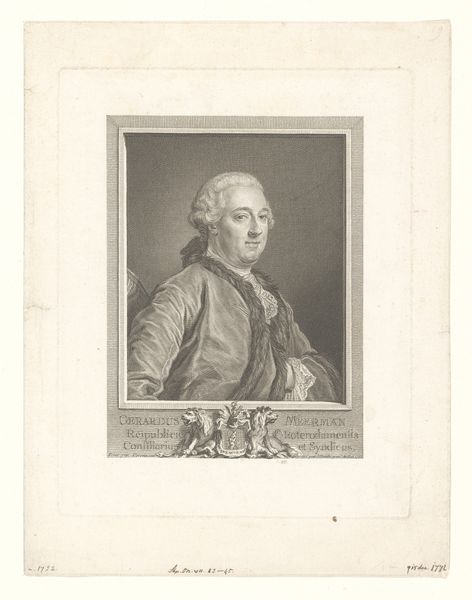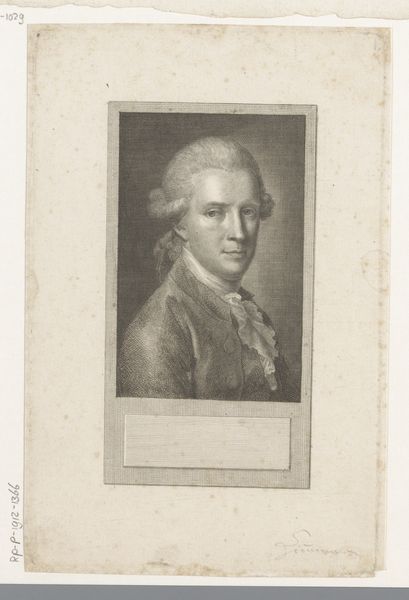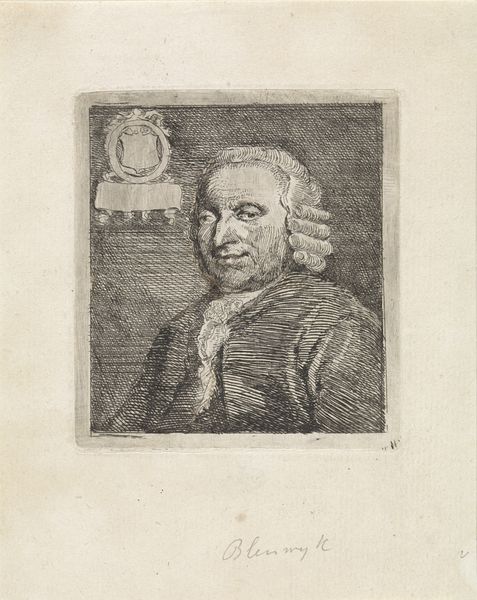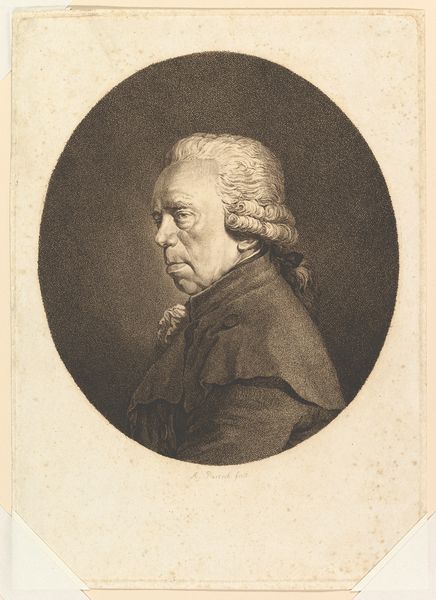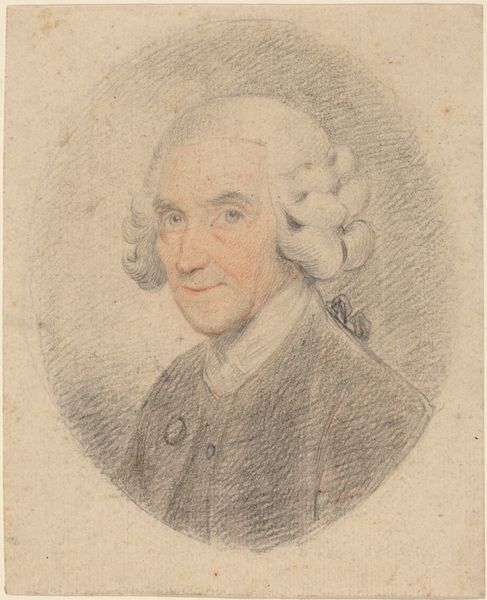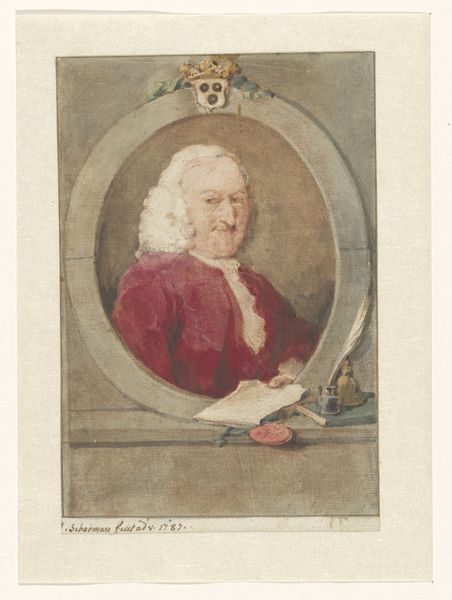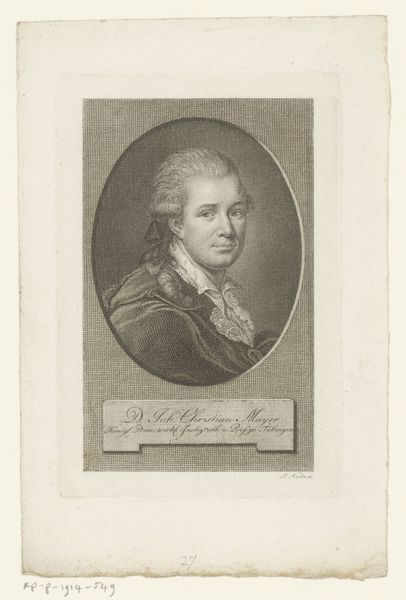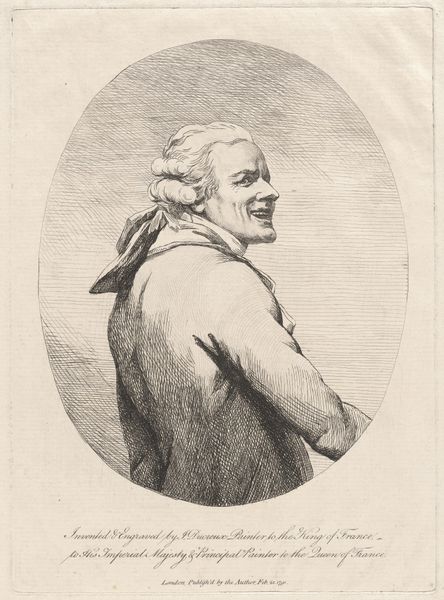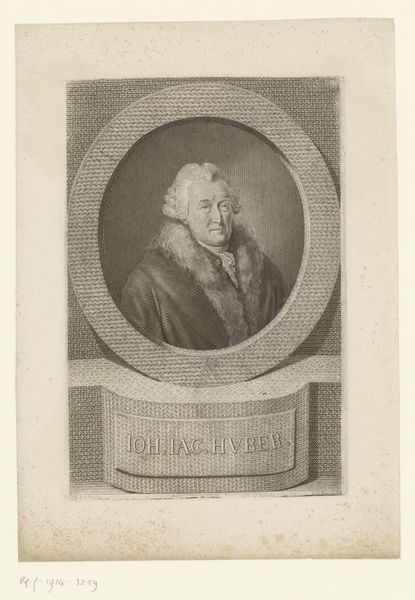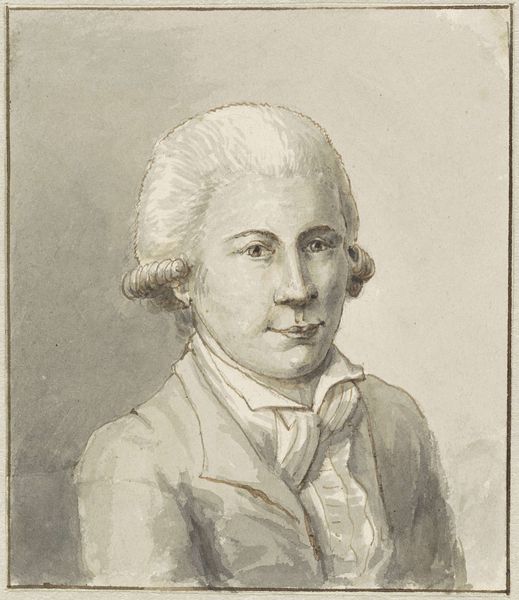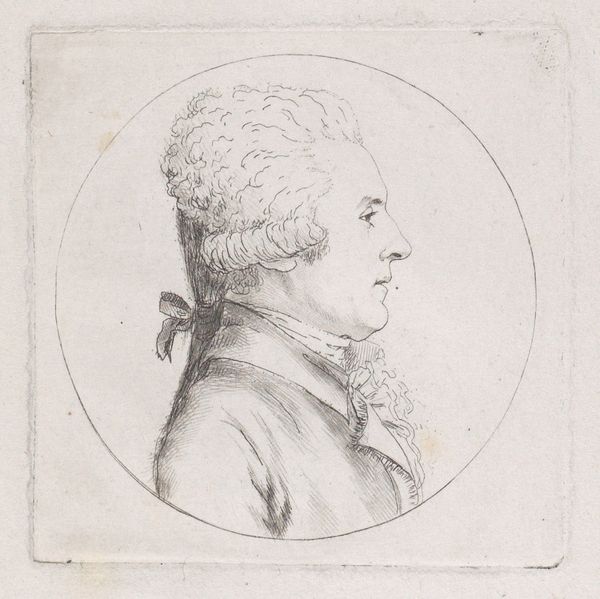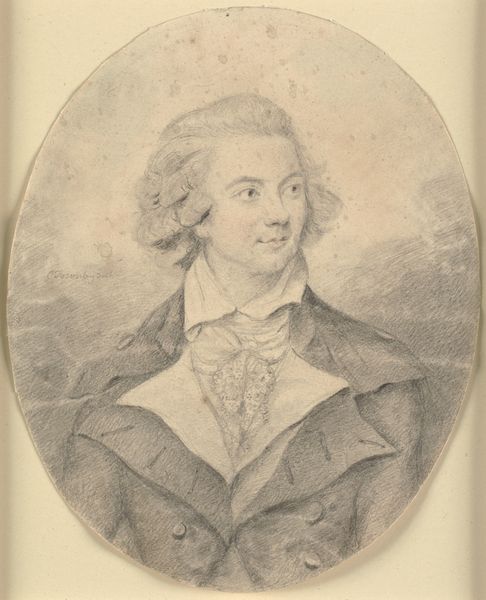
François-Emmanuel Pommyer, abbot of Bonneval 1772
0:00
0:00
drawing, paper, charcoal
#
portrait
#
drawing
#
neoclacissism
#
charcoal drawing
#
paper
#
charcoal
#
academic-art
Dimensions: 4 1/2 x 3 1/2 in. (11.5 x 8.9 cm)
Copyright: Public Domain
Editor: This is a charcoal drawing on paper titled "François-Emmanuel Pommyer, abbot of Bonneval," created in 1772 by Charles Nicolas Cochin II. It’s currently housed in the Metropolitan Museum of Art. The abbot's placid expression makes me curious. What does this portrait tell us about the subject and the society that commissioned it? Curator: This portrait provides insight into the culture of 18th-century France and the role of the Church within it. Consider that Cochin was a prominent engraver deeply involved in the Royal Academy. His works helped shape public perception of art and the monarchy. This portrait, while seemingly straightforward, reflects the values of the establishment. Editor: How so? It appears to be a simple depiction of a man of the cloth. Curator: Precisely. Its very simplicity is a statement. Note the clean lines, the focus on rational representation, characteristic of Neoclassicism. It’s an elevation of the individual through restrained, almost stoic, portrayal. The abbot is presented not as a flamboyant religious figure, but as a man of reason and order, fitting into the enlightened ideals that were starting to take hold, even within the Church, before the Revolution. How do you think this image would function publicly? Editor: Maybe to present the Church as modern and aligned with Enlightenment ideals? Less about ornate displays of power and more about quiet authority. Curator: Exactly! The politics of imagery! Consider the turbulent times. Even portraits served a purpose in shaping public opinion and legitimizing institutions. Think about the subtle messaging at play, and who the intended audience might be. Editor: That makes me see it completely differently. It's more than just a portrait; it's a carefully constructed message reflecting social and political tensions. Curator: Indeed. Art never exists in a vacuum. Examining its context reveals deeper layers of meaning and intent. I will also look deeper into public art's messaging.
Comments
No comments
Be the first to comment and join the conversation on the ultimate creative platform.
